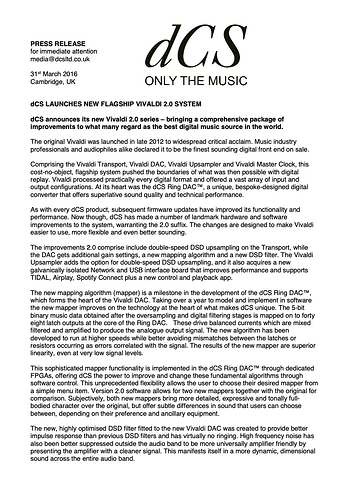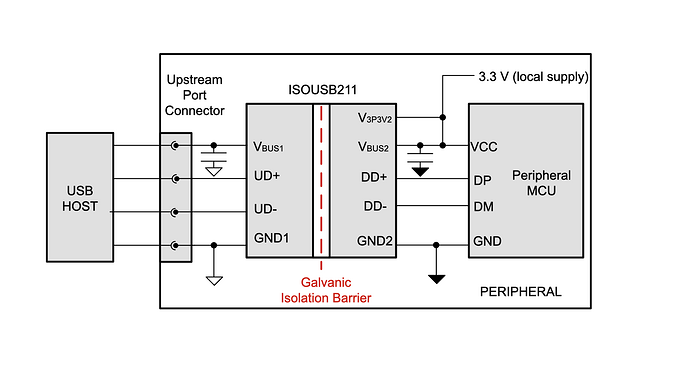Gents,
I have DCV Vivaldi DAC (non-Apex) and I wonder if digital inputs are galvanically isolated in this product. I cannot find this information. I am particularly interested in USB input. I know this construction has been some years in production and if I am correct a decade ago this type of isolation was not so popular, so I wonder if it has been actually implemented. Nowadays even much cheaper dacs have it. Should USB input not been galvanically isolated - what isolators would you recommend?
The only input that is galvanically isolated on the Vivaldi DAC is the S/PDIF 4 (Toslink) input. USB is not galvanically isolated by its design, which is its principal disadvantage.
Worth noting that the Network inputs (RJ45 sockets) of the dCS Network Bridge, Vivaldi Upsampler and all the streaming DACs are galvanically isolated as long as an unshielded ethernet cable is used.
Many thanks for your explanation. This is the info I was looking for.
Andrew, IIRC, there’s a little more to it than that (albeit on the Upsampler)? I can’t recall the details, but from the dCS Vivaldi 2.0 (2016) Press Release;
The improvements 2.0 comprise include double-speed DSD upsampling on the Transport, while the DAC gets additional gain settings, a new mapping algorithm and a new DSD filter. The Vivaldi Upsampler adds the option for double-speed DSD upsampling, and it also acquires a new galvanically isolated Network and USB interface board that improves performance and supports TIDAL, Airplay, Spotify Connect plus a new control and playback app.
Thanks @Anupc and apologies @poohatek, the situation. is obviously not as black-and-white as I thought. I’ll do a bit of digging and get back to you.
@AndrewS , to clarify - I have Vivaldi 2.0, my unit was produced in 2019. It is not ‘a decade’ old as my initial post might imply.
Understood @poohatek, however we haven’t made any hardware changes to the Vivaldi DAC other than the APEX upgrade, unlike the Vivaldi Upsampler which was upgraded to the Upsampler Plus (which was when the galvanically isolated network board was introduced). I need to get to the bottom of what this means for the USB inputs on VDC vs VPP and will get back to you and clarify when I have.
OK, I have now got to the bottom of this. The situation was slightly more nuanced than I thought.
As I said, the USB interface is, according to the standard, not galvanically isolated. Moreover it runs at such high frequencies (280 Mb/s) that it is pretty much impossible to isolate, the isolation chips available are simply not capable of working at those frequencies.
With the Vivaldi Upsampler Plus however we used a new USB controller which included isolation on the downstream (i.e. audio) side of the XMOS controller chip. This is what is referred to in the press release. Around the same time the original USB controller that we had been using was end-of-life:d and we switched to the new one in the Vivaldi DAC as well as part of a standard in-production parts change.
So @poohatek, your Vivaldi DAC does in fact have a USB interface that is galvanically isolated.
Good catch by @Anupc.
Thanks Andrew, good to know!
On a side note though;
Actually, USB 2.0 galvanic isolator chips are pretty commonplace these days. From the likes of Analog Devices and Texas Instruments. It’s the basis for USB Galvanic isolators used in Medical equipment and the Automotive industry.
Thanks. I guess a lot has happened in the intervening 10 years!
@AndrewS - many thanks for your research and explanation. I am glad I don’t need another ‘gizmo’ in my USB chain since the DAC’ s input does the job. Thx.
I thought I read somewhere here a few weeks back that all the current dCS lineup is Galvanically isolated, Can’t remember if it was you or Phil that posted. (I really should invent more time in using the search engine!)
This?

